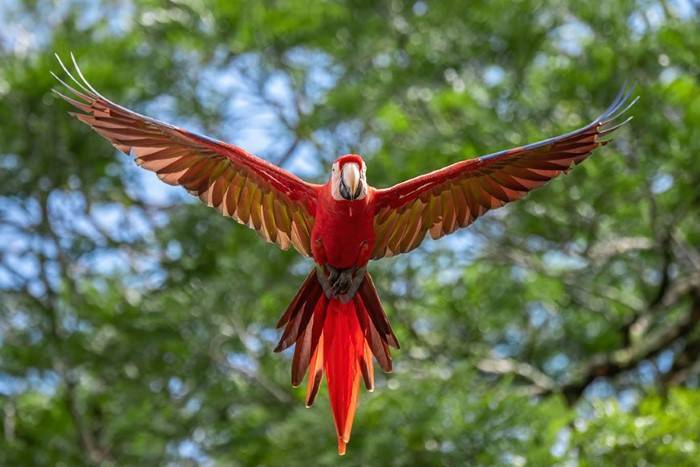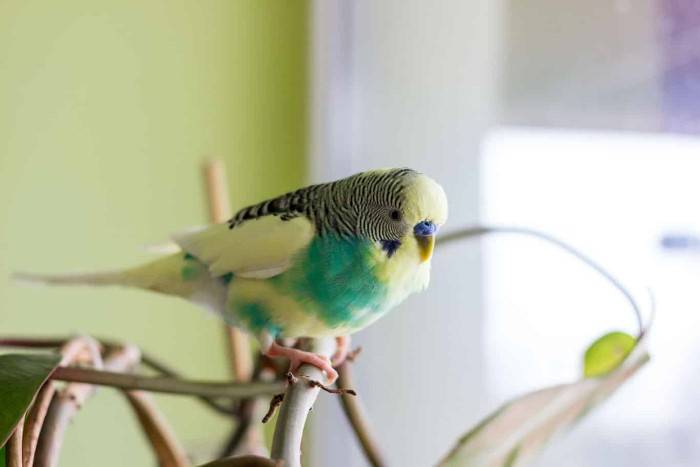Parakeets, with their vibrant plumage and playful personalities, are beloved pets cherished by bird enthusiasts around the world. One common behavior observed in parakeets is puffing up, where the bird fluffs out its feathers to appear larger and rounder. While this behavior may seem cute or amusing, it serves a vital purpose in the life of a parakeet. In this blog post, we delve into the fascinating world of parakeet behavior, exploring the reasons why these delightful birds puff up and what it signifies about their health, emotions, and environment.
Understanding Parakeet Physiology
Before we explore the reasons behind puffing up in parakeets, it’s essential to understand the unique physiology of these small birds. Parakeets, also known as budgerigars or budgies, are small members of the parrot family characterized by their slender bodies, long tail feathers, and distinctive color patterns. Like all birds, parakeets have a layer of downy feathers beneath their outer plumage, which helps insulate their bodies and regulate their temperature.
Thermoregulation
One of the primary reasons parakeets puff up is to regulate their body temperature, a process known as thermoregulation. Parakeets, like all birds, are warm-blooded creatures that maintain a constant internal body temperature regardless of external environmental conditions. When parakeets puff up, they trap a layer of warm air between their feathers, creating an insulating barrier that helps conserve body heat. This is particularly important for parakeets in colder climates or during chilly nights when maintaining optimal body temperature is essential for their health and well-being.
Stress and Fear
Another common reason parakeets puff up is in response to stress, fear, or perceived threats in their environment. When parakeets feel anxious or threatened, they may instinctively puff up their feathers as a defensive mechanism to appear larger and more intimidating to potential predators or rivals. Puffing up can also serve as a form of camouflage, helping parakeets blend in with their surroundings and avoid detection by predators. In multi-bird households, parakeets may puff up in response to territorial disputes or social hierarchies within their flock.
Comfort and Relaxation
In addition to thermoregulation and stress responses, parakeets may puff up as a sign of comfort, relaxation, or contentment. Puffing up can help parakeets feel cozy and secure, especially when they are resting or sleeping. By fluffing out their feathers, parakeets create a soft and cushioned surface that provides warmth and support, allowing them to relax and unwind after a long day of activity. Puffing up may also be accompanied by other behaviors such as chirping softly or closing their eyes, indicating that the parakeet is in a state of calm and relaxation.
Social Interactions
Parakeets are highly social creatures that thrive on interaction and companionship with their human caregivers and fellow flock members. Puffing up can be a form of social signaling used by parakeets to communicate with others in their flock. For example, a male parakeet may puff up his feathers and perform a courtship display to attract a potential mate, while a female parakeet may puff up to indicate receptiveness to mating or as a form of bonding with her mate or flockmates. Puffing up can also be a way for parakeets to assert dominance or establish social hierarchies within their flock.
Illness or Discomfort
While puffing up is a natural behavior for parakeets, excessive or prolonged puffing up may indicate underlying health problems or discomfort. Parakeets that are unwell or in pain may puff up their feathers in an attempt to conserve energy or mask symptoms of illness. Common health issues that can cause excessive puffing up in parakeets include respiratory infections, digestive problems, feather mites, or injury. If you notice your parakeet puffing up excessively or exhibiting other signs of illness, such as lethargy, loss of appetite, or difficulty breathing, it’s essential to seek veterinary care promptly to diagnose and treat the underlying cause.
Why Do Parakeets Puff Up?
Environmental factors such as temperature, humidity, and air quality can also influence a parakeet’s tendency to puff up. Parakeets may puff up in response to changes in temperature, such as sudden drops in temperature or drafts of cold air. Similarly, parakeets may puff up in humid conditions to help regulate their body temperature and prevent overheating. Poor air quality, such as exposure to smoke, dust, or strong odors, can also trigger puffing up as a protective response to respiratory irritation or discomfort.
Related Post:
Understanding Avian Sensitivity: What Smells Do Birds Hate?
Cracking the Cayuga Duck Egg Mystery: Unveiling the Secrets of Cayuga Duck Eggs
Unraveling the Complex World of Aggressive Male Duck Behavior
Puffing up is a common behavior observed in parakeets that serves a variety of functions related to thermoregulation, stress response, social interaction, and health. By puffing up their feathers, parakeets can regulate their body temperature, communicate with others in their flock, and express their emotions and well-being. While occasional puffing up is normal and healthy for parakeets, excessive or prolonged puffing up may indicate underlying health problems or environmental stressors that require attention. By understanding the reasons behind parakeet puffing and monitoring their behavior closely, bird owners can ensure the health, happiness, and well-being of their feathered companions for years to come.




